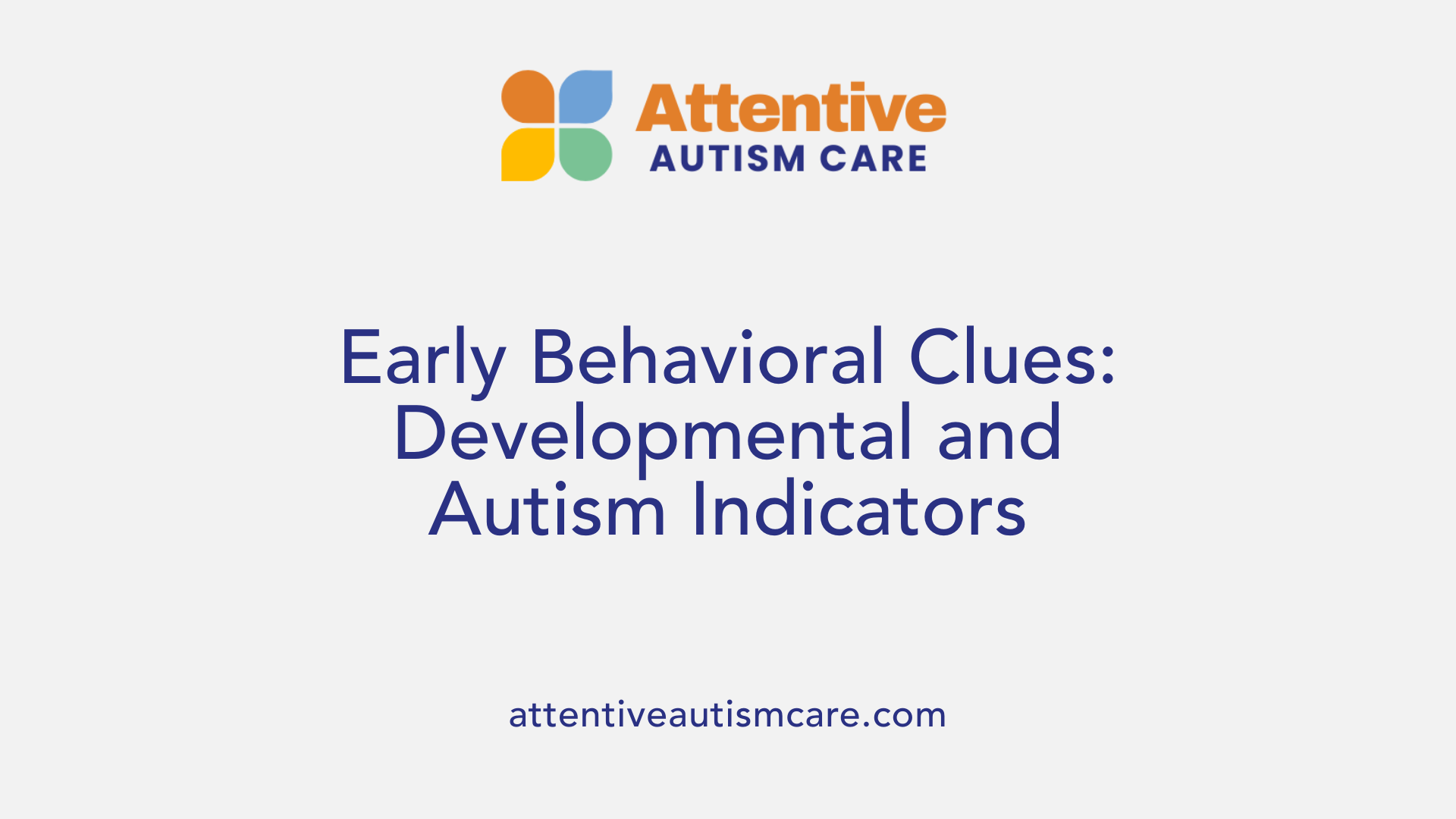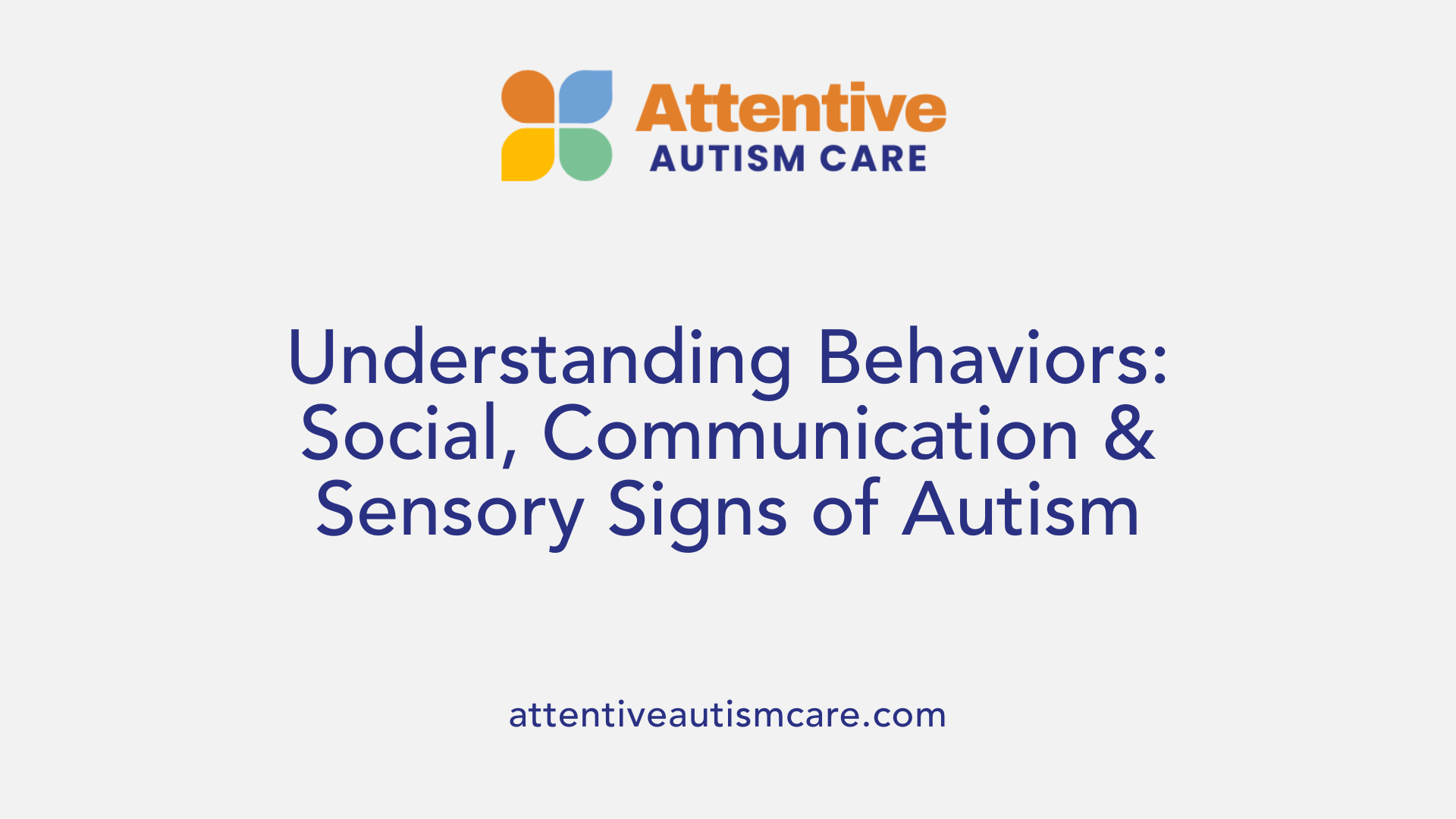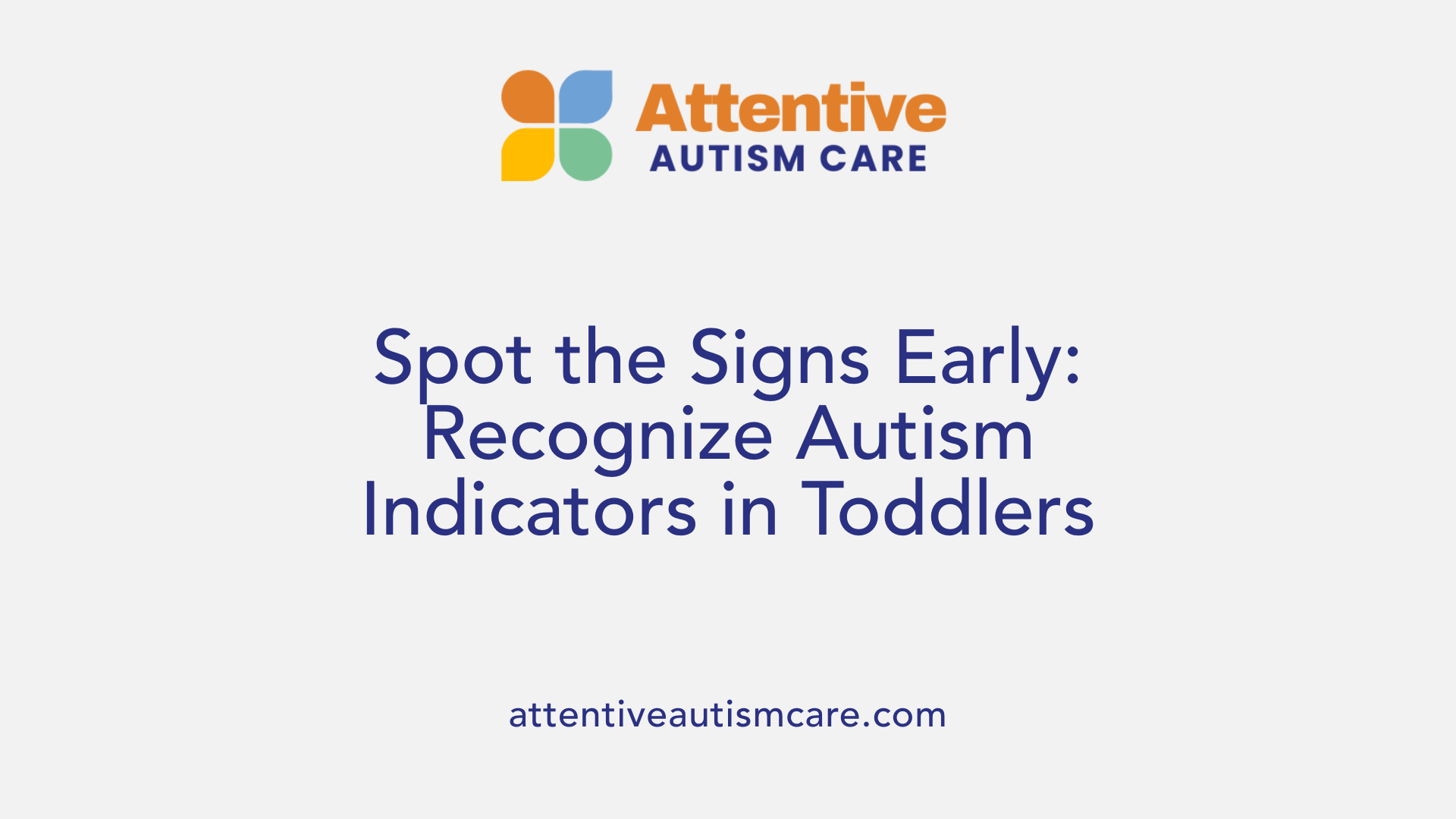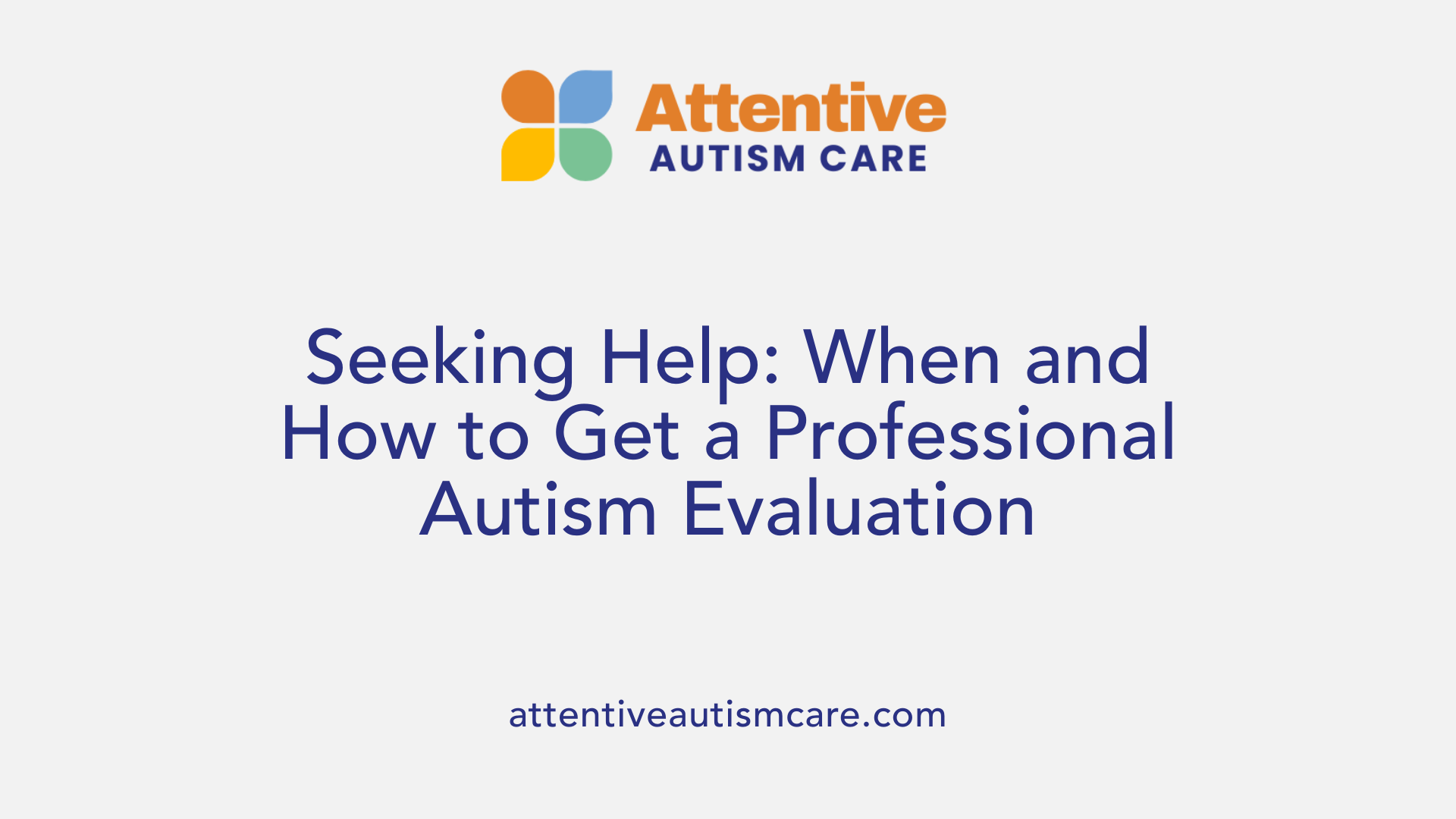What Are the Early Signs of Autism in Toddlers
Understanding the Early Indicators of Autism Spectrum Disorder in Toddlers

Introduction to Early Signs of Autism in Young Children
Recognizing the early signs of autism in toddlers is crucial for early intervention, which can significantly improve developmental outcomes. Autism Spectrum Disorder (ASD) manifests in various ways, primarily affecting social interaction, communication, and behavior. This article aims to educate parents and caregivers about the key early indicators during the first two years of life, helping them differentiate typical developmental milestones from red flags that warrant professional assessment.
Developmental Milestones Versus Red Flags in Autism

What are typical age-related social and communication milestones?
Most children reach certain social and communication skills by specific ages. For example, by 6 months, infants often respond to their name, smile at familiar faces, and enjoy interactive games like pat-a-cake. By 12 months, many babble, wave goodbye, or point to share interest. At 18 months, children usually follow simple instructions, use more gestures, and say a few words. By 24 months, children tend to combine two words into phrases and show understanding of basic concepts. As children grow, they develop increasingly complex language, engage in pretend play, and share enjoyment with others.
How can I differentiate between typical developmental milestones and red flags for autism?
Identifying early signs involves noting behaviors that diverge from these typical milestones. Persistent difficulties in response to their name, limited eye contact, and reluctance to engage in shared activities are red flags. Repetitive motions, unusual reactions to sensory stimuli, and a lack of interest in playing with others or sharing objects further indicate concerns. Unlike children who are shy or introverted, those with autism often demonstrate ongoing impairments in social reciprocity and communication that do not improve with age.
For example, while occasional delays can be normal, sustained absence of gestures such as pointing or waving, especially after 12 months, warrants attention. Similarly, if a child does not develop words by 16-18 months or shows regression—losing previously acquired language skills—these are important warning signs.
What is the role of regular developmental surveillance?
Routine checkups are essential for early detection. The American Academy of Pediatrics recommends screening all children at 18 and 24 months. Tools like the M-CHAT-R enhance the ability to spot early signs of autism. Ongoing observation by healthcare providers helps distinguish typical variations from concerning signs.
Early identification provides a window for prompt intervention, which can significantly improve social, communication, and behavioral outcomes. Caregivers are encouraged to learn developmental milestones, observe their child's behavior, and seek evaluation if red flags appear.
| Age Range | Typical Behaviors | Atypical or Concerning Signs | Examples of Red Flags |
|---|---|---|---|
| 6-12 months | Responds to name, eye contact, playful interactions | Not responding to name, avoiding eye contact, limited smiling | No eye contact by 6 months, no response to name after 9 months |
| 12-18 months | Using gestures, simple words, play imitation | No pointing, limited gestures, no words | No gestures like waving or pointing by 15 months |
| 24 months | Combining words, engaging with others | No meaningful words or phrases, not following simple instructions | 2-word phrases absent, limited social smiling |
| Preschool years | Engages in pretend play, shows interests, communicates | Limited pretend play, repetitive behaviors, difficulty with social cues | Avoiding eye contact, resistance to routine changes |
By understanding these developmental benchmarks and red flags, parents and caregivers can better advocate for early assessments. Early action facilitates access to tailored support that can enhance a child's growth and abilities.
Identifying Behavioral and Developmental Indicators in Young Children

How can parents recognize behavioral and developmental indicators of autism in young children?
Parents play a crucial role in early detection by observing their child's behavior during routine activities. Key signs include a lack of eye contact and not responding to their name by approximately 9 months of age. They might notice that their child does not use gestures such as waving or pointing by 12 months and may not engage in simple interactive games like pat-a-cake.
Another important indicator is delayed speech and language development. For instance, some children may not say any words by 16 months or might not form meaningful two-word phrases by age 2. Repetitive movements are also common, such as hand-flapping, flicking fingers, or rocking the body. Sensory sensitivities, where a child reacts unusually to sounds, textures, or lights, are additional behavioral clues.
Children on the autism spectrum often show difficulties with social interactions, like not sharing interests, avoiding eye contact, and having trouble understanding others’ emotions or social cues. Recognizing these signs early allows parents to seek professional evaluation and possible intervention.
When should parents be concerned about speech and language delays?
Parents should note if their child shows little or no babbling by 12 months, or if they do not attempt to imitate sounds or gestures. By 18 months, children who do not point to show interest or share objects may need further assessment. The absence of meaningful words or phrases by age 2 is also a significant concern. Regressive language milestones, where a child previously spoke and then stops, can signal developmental issues associated with autism.
What sensory and repetitive behaviors should caregivers watch for?
Unusual reactions to sensory stimuli are common in children with autism. These include being overly sensitive to loud noises or bright lights, or seeking out certain textures, smells, or movements. Repetitive behaviors like lining up toys, flipping wheels, or insisting on rigid routines may help distinguish autism. Some children might also show unusual body movements such as hand-flapping or body stiffening.
Monitoring these behaviors during everyday routines can help caregivers identify early signs and decide whether to consult a healthcare professional for further screening and support.
| Behavior/Indicator | Typical Age of Onset | Examples | Additional Notes |
|---|---|---|---|
| Not responding to name | By 9-12 months | Ignoring verbal calls | Can be an early sign observed by parents |
| Limited eye contact | By 6 months | Avoids gaze with caregivers | Reduced eye contact is common in infants and toddlers |
| Lack of gestures | By 12-15 months | Not waving goodbye or pointing | Gestures are key in early communication |
| Repetitive behaviors | From 12 months | Hand-flapping, lining up toys | Repetition may extend to speech or routines |
| Sensory sensitivities | Any age | Overreaction to loud sounds or textures | Can include seeking certain sensations or avoiding stimuli |
| Delayed speech | 12-24 months | Few or no words | Absence of catch-up in language skills |
| Resistance to routines | 2 years and older | Upset by changes in daily schedule | May indicate preference for sameness |
| Limited social interaction | 1-3 years | Not engaging with peers | Difficulties in sharing or joint attention |
Early recognition of these behaviors is vital for timely intervention that can significantly improve developmental outcomes in children with autism spectrum disorder.
Social, Communication, and Sensory Behaviors in Toddlers with Autism

What are the key social, communication, and sensory behaviors associated with autism in toddlers?
Autism spectrum disorder (ASD) in toddlers often presents with noticeable differences in how children interact socially and process sensory information. One of the hallmark features is a slowdown or absence of typical social engagement. Toddlers with autism may show reduced eye contact and may not respond consistently when their name is called. They often struggle to initiate or sustain social interactions, which makes sharing experiences and forming relationships difficult.
Communication delays are also common. Many toddlers with ASD have limited spoken language, and some may not talk at all. Those who do speak might exhibit unusual speech patterns, such as echolalia—repeating words or phrases they hear—and may use few gestures to communicate, such as waving goodbye or pointing. They may find it hard to understand others' feelings or express their own emotions effectively.
Senses play a significant role in autism. Many children show sensory behaviors like overreacting or underreacting to sounds, lights, textures, and other stimuli. For example, some might be overly distressed by loud noises or bright lights, while others seem indifferent to painful stimuli or textures that typically bother other children.
Seeking sensory input is common, too. Children might rub objects, smell things repeatedly, or seek out excessive motion to satisfy their sensory needs. Conversely, they might avoid certain sensations, sticking to routines to reduce unpredictable sensory experiences.
Restricted and repetitive behaviors are a third notable aspect. These include hand-flapping, rocking, lining up toys, and insisting on sameness. Such routines and intense interests can dominate their activities and limit variability in play.
| Behavior Aspect | Typical Signs in Toddlers with Autism | Additional Details |
|---|---|---|
| Social Engagement | Limited eye contact, difficulty sharing interests | Affects relationships and social learning |
| Communication | Delayed speech, echolalia, few gestures | Impacts language development and interactions |
| Sensory Responses | Over or under reaction to stimuli, seeking or avoiding sensory input | Influences daily comfort and behaviors |
| Repetitive Actions | Hand-flapping, lining up objects, routines | Can interfere with flexible play and learning |
Overall, these intertwined behaviors significantly influence communication, social adaptation, and daily functioning. Recognizing these signs early helps in planning interventions that support social skills and sensory regulation in toddlers with autism.
Recognizing Early Signs of Autism in Toddlers

What are the early signs of autism in toddlers?
Early signs of autism in toddlers can be subtle but important indicators of developmental differences. By around 6 months, some infants may exhibit limited eye contact, rarely smile in social situations, and may show little response when their name is called. They might also be less interested in engaging with caregivers or playing simple games like pat-a-cake.
As toddlers reach 12 months, additional signs become more apparent. These include minimal or no babbling, lack of gestures like waving or pointing, and little response to social cues. They may not follow gaze shifts or respond when others call their name, indicating challenges with joint attention, a vital aspect of early social development.
By 16 months, some children with autism may have very few or no words. They might also show limited use of gestures and routines, often resisting changes in their environment or daily activities. Their play may appear repetitive or limited in variety, and they may seem overly focused on certain objects.
At around 24 months, delays in speech become more noticeable. Children might have very few or no meaningful two-word phrases and show minimal interest in shared activities. They may avoid eye contact, display repetitive behaviors like hand-flapping or body-stiffening, and have difficulty understanding or responding to instructions.
Behavioral and language signs to monitor
Behavioral signs include repetitive motions such as flicking fingers or rocking, intense reactions to sensory stimuli, and resistance to routine changes. Language delays often involve limited spoken words, echoing or repeating phrases, and challenges in understanding simple language or instructions. Children at this stage may also exhibit unusual reactions to sounds, textures, or tastes, and carry objects for comfort. Difficulties in social interaction—like unresponsiveness or failure to share interests—are common. Recognizing these signs early allows for prompt evaluation and support.
Variation in signs among individual children
It’s important to remember that signs of autism can vary widely among children. Some may show prominent social and language delays, while others might display more noticeable repetitive behaviors or sensory sensitivities. Some children develop typical skills initially but regress later, losing language or social skills around 15 to 24 months.
Every child is unique, so not all signs need to be present for concern. Developmental milestones serve as useful guides, but if parents notice any signs of delay or atypical behavior, consulting a healthcare professional is crucial for early diagnosis and intervention.
When and How to Seek Medical Advice or Diagnosis

What guidance can I follow to determine when to seek medical advice or diagnosis for autism in my toddler?
Parents should be attentive to early developmental signs that might indicate autism spectrum disorder (ASD). If your toddler shows persistent delays or unusual behaviors such as not responding to their name by 9 months, it’s a sign to consider seeking advice.
Additional indicators include:
- Not sharing interests or pointing to objects by 18-24 months
- Limited or no social interactions by age 3
- Avoiding eye contact consistently
- Repeating motions or words excessively
- Preferring routines and becoming upset with changes
- Sensory sensitivities, such as overreacting to sounds or textures
- Difficulties engaging in play or sharing enjoyment with others
The American Academy of Pediatrics recommends developmental screenings at 18 and 24 months. These checkups are designed to spot early signs of autism.
If you observe these signs, consult your child's healthcare provider promptly. A professional evaluation often involves direct observations, developmental testing, and may include referrals to specialists like speech therapists or psychologists.
Why is early diagnosis important?
Early diagnosis significantly enhances access to support and therapies that can improve social, communication, and behavioral skills. The earlier intervention begins—preferably before age 3—the better the chances are for your child to reach their full potential.
Regular monitoring and being alert to developmental milestones can help you act quickly if concerns arise. Remember, every child develops uniquely, but timely professional assessment ensures you are prepared to support your child's needs as early as possible.
Empowering Parents with Knowledge and Actionable Steps
Early recognition of signs associated with autism spectrum disorder enables timely intervention, which can greatly enhance a child's developmental trajectory. Parents are encouraged to familiarize themselves with developmental milestones, monitor their child's progress carefully, and use screening tools such as the M-CHAT-R during routine checkups. Should they notice any red flags—such as limited social engagement, delayed speech, or repetitive behaviors—they should seek professional guidance promptly. Collaborating with healthcare providers ensures that children receive the necessary evaluations, support, and therapies early on, setting a strong foundation for their growth and well-being.



































































































